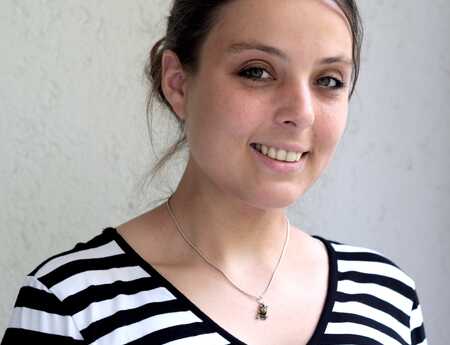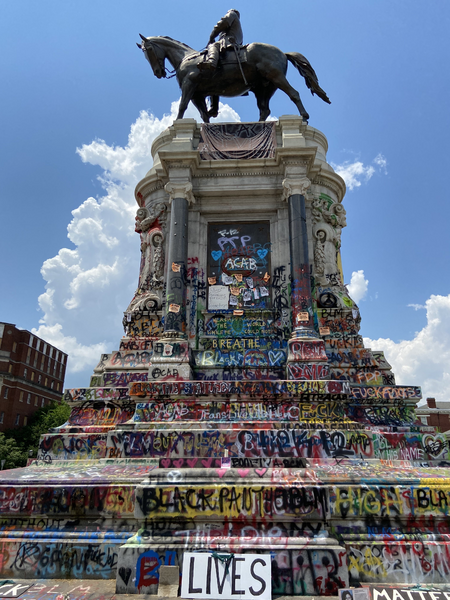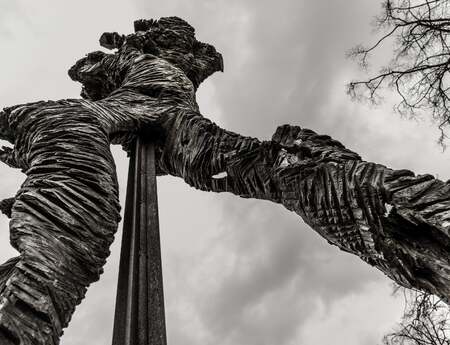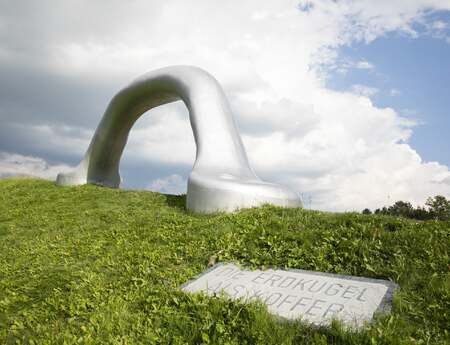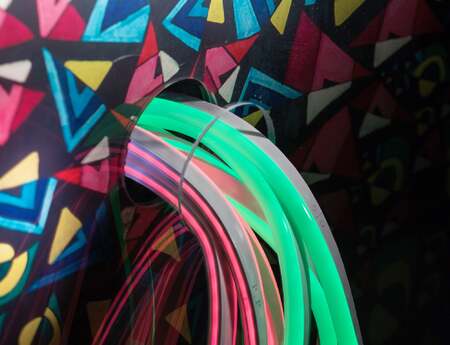The Revolutionary Power of Art – sculpture network’s Theme of the Year “Sculpting Society”
Why art? Why sculpture? It is questions like these that artists and art-lovers alike are regularly confronted with. The answers are as varied as those asking the questions in the first place, but most would agree on one thing: art is a part of society. With this year’s theme of “Sculpting Society,” sculpture network is drawing attention to the possibility that three-dimensional art is having a sociopolitical impact.
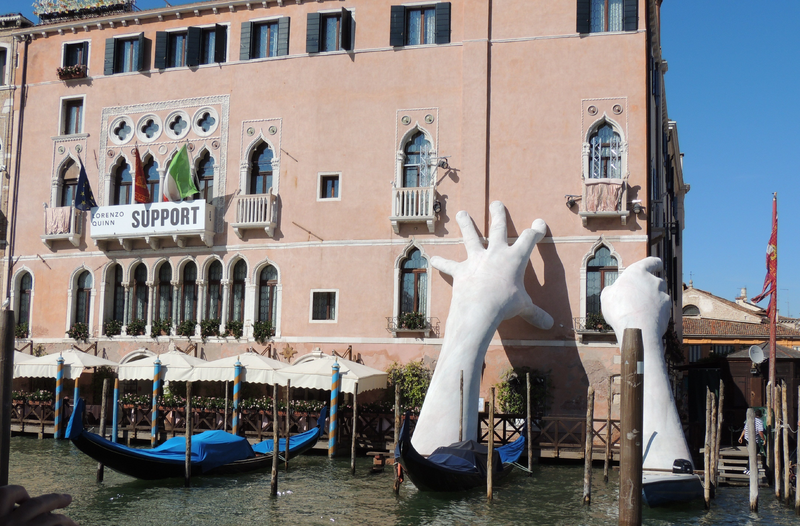
We look back at a year full of challenges – some we have overcome, others still lie ahead. Much of what moves us socially, we take into the new year: the climate crisis, the Covid-19 pandemic, and the struggle for social justice will accompany us for a long time to come, alongside other conflicts great and small. This overall tense situation weighs heavily on many people. It is a reality from which nobody can escape, and we as a society remain responsible for overcoming it. A real Sisyphean task that can seem overwhelming. In a time of crisis it is often art that people turn to in search of consolation and hope. It is art that can help us cope with the world. However alarming it is, artists and the art industry are currently suffering as a consequence of the pandemic. According to UNESCO, 95% of museums worldwide were closed at the height of the first wave in May 2020. After years of growth, the Global Art Market Report recorded a decrease in the sale of art by 22% in 2021 in comparison to the numbers seen in 2019. And yet it is art that motivates us, that gives us perspective and hope day-to-day. It is artists who, despite their own precarious situations, are finding new ways to work through our collective trauma by gifting us with art and teaching us to understand it. And that art is making its mark.
Three-dimensional art in all of its forms is of particular importance and value to society due to its mere existence, because it is almost impossible to completely avoid: a public sculpture can hardly be ignored, as it forces our gaze towards it, purely through its physical presence. A performance comes only from the attendance of its audience, existing only in their interaction. An installation doesn’t only summon interaction, but also transforms the everyday into art, blurring the boundaries between artwork and the everyday lives of viewers. Action art interferes very directly with sociopolitical processes and shapes them. In all of its forms, three-dimensional art encourages (or forces?) us to engage in discussion in a very special way.
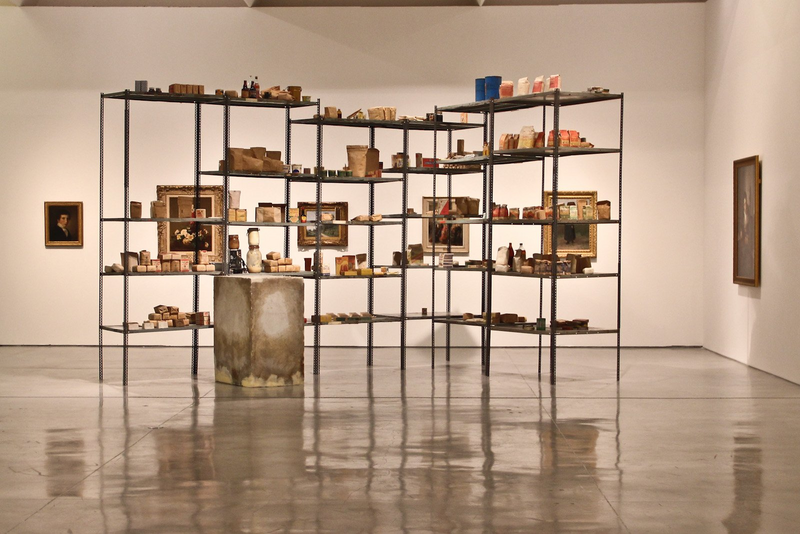
Joseph Beuys raised the idea of art having this social element in the 1970s with his idea of social structure. Driven by the desire to view art and knowledge as being mutually fruitful, and not as polar opposites, he called for an active integration of art into sociopolitical processes. Not l’art pour l’art, but art as a vehicle for action, as a creative force. Not centred around the artefact alone, but the concept behind the artwork, whether it is physically visible or not. The core idea of this expanding art term meanwhile (even if it is not quite as radical as Beuys insisted) has landed right in the middle of society. Few today would question the idea of art being able to mould and shape society - be it through artworks that we consume and incorporate into discussion, through artworks that criticise and expose our actions, or those that repel us and force boundaries between us.
“The only revolutionary power is the power of human creativity - the only revolutionary power is art” - Joseph Beuys
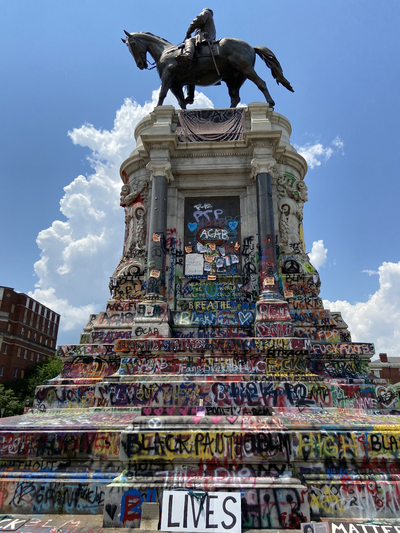
These days, like never before, public sculpture is at the heart of the debate. It concerns nothing less than the question: what’s it worth to be remembered in the public sphere? Whose statue has a right to this place - and whose should be torn down? This question has lead to an increase in statues of historical figures connected to colonialism and the slave trade being destroyed. Art, or in this case specifically sculpture, acting as the bearer of Assmann’s idea of cultural memory is accessible to all, regardless of status, level of education, background and environment…That makes it a powerful tool - a tool, which demands considered application. Modern iconicism is closely connected with the Black Lives Matter movement and to the requirement to shape cultural memory, and to invoke an image of an open, free and similar society. Acting as a souvenir in the public sphere, the statue is a building block in cultural remembrance - its fall is a powerful symbol, and provides a wholly obvious and foundational question: can we form a focused cultural memory? What does it do to us, when we try to remove specific aspects of knowledge?
The immense symbolism of public sculptures was demonstrated only a few weeks ago, when the Chinese government had a memorial destroyed that was dedicated to those killed in the 1989 protests on Tiananmen Square in Hong Kong. The subtext of this is clear: those who destroy memorials are removing something from cultural memory, be it for good or for bad. Each person may decide on an individual or situational basis whether it is desirable. But one thing is certain: sculpture has this power. Constructive and destructive potential both exist equally within.
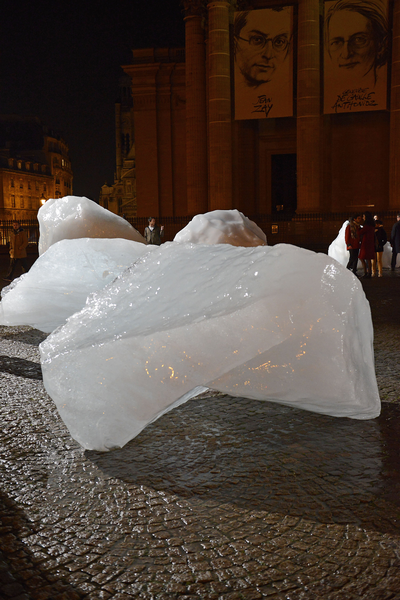
Using this power to benefit our society is at the forefront of the recently emerging art form of Climate Change Art. One of the greatest global challenges of our time, that is, minimising the negative influence that humanity has had on the environment, still remains. And it isn’t an option to just sit back and relax. Time is running out! The urgency is imparted not only through political protests happening across the globe, but it is also, and most significantly, often illustrated through monumental artwork. Works of art that show us how small we are as individuals at the hands of nature. The power to touch people on an emotional level, and in a very individual way, exists only within art. Where arguments, debates and [slogans] begin to fail, it is possible that 3D art can initiate a change in thinking.
The late conceptual artist Lawrence Weiner once said “Art is now an open conversation with society.” Let’s enter into this dialogue. Let’s allow the art to speak and integrate with it! Three-dimensional art makes it easy for its audience to feel like an integral part of it, rather than simple observers. This immediacy, this possibility of integration and interaction, gives it the power to move society. Let’s use this year, with all of its challenges, to find new ways to think about art and society through sculpture network’s theme of the year, “Sculpting Society.”
Published in February 2022
Translation: Hannah Griffiths
Photo-Credits:
(1) Lorenzo Quinn: Support (2017). Photo: Abxbay (https://commons.wikimedia.org/wiki/File:CANAL_GRANDE_-_palazzo_Sagredo_-_Lorenzo_Quinn_-_Support_2.jpg), „CANAL GRANDE - palazzo Sagredo - Lorenzo Quinn - Support 2“, https://creativecommons.org/licenses/by-sa/4.0/legalcode
(2) Joseph Beuys: Wirtschaftswerte (1980). Photo: Avital Pinnick (https://www.flickr.com/photos/spindexr/8100498647), https://creativecommons.org/licenses/by-nc-nd/2.0/
(3) Robert E. Lee Monument in Richmond, Virginia, after Black-Lives-Matter-protests in July 2020. Photo: Mk17b (https://commons.wikimedia.org/wiki/File:Defaced-lee-statue-2020.jpg), „Defaced-lee-statue-2020“, https://creativecommons.org/licenses/by-sa/4.0/legalcode
(4) Ólafur Elíasson: Ice Watch (2015). Place de Panthéon, Paris. Photo: UNclimatechange from Bonn, Germany (https://commons.wikimedia.org/wiki/File:Glacier_ice_installation_'Ice_Watch'_at_Place_du_Panthéon,_Paris_(23513517355).jpg), „Glacier ice installation 'Ice Watch' at Place du Panthéon, Paris (23513517355)“, https://creativecommons.org/licenses/by/2.0/legalcode

